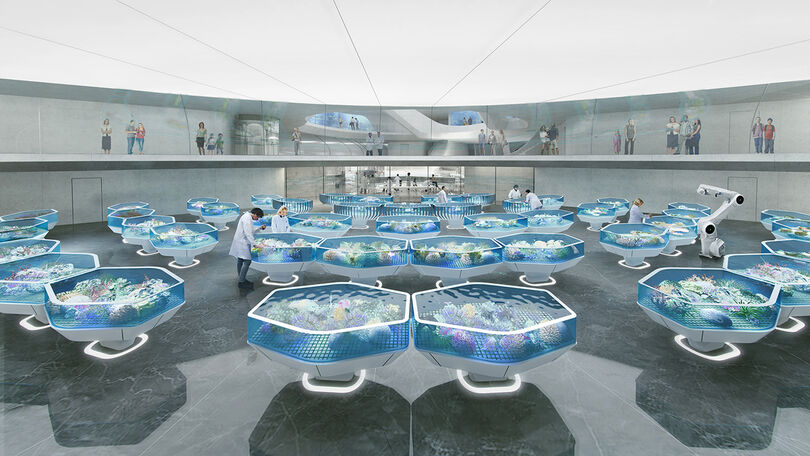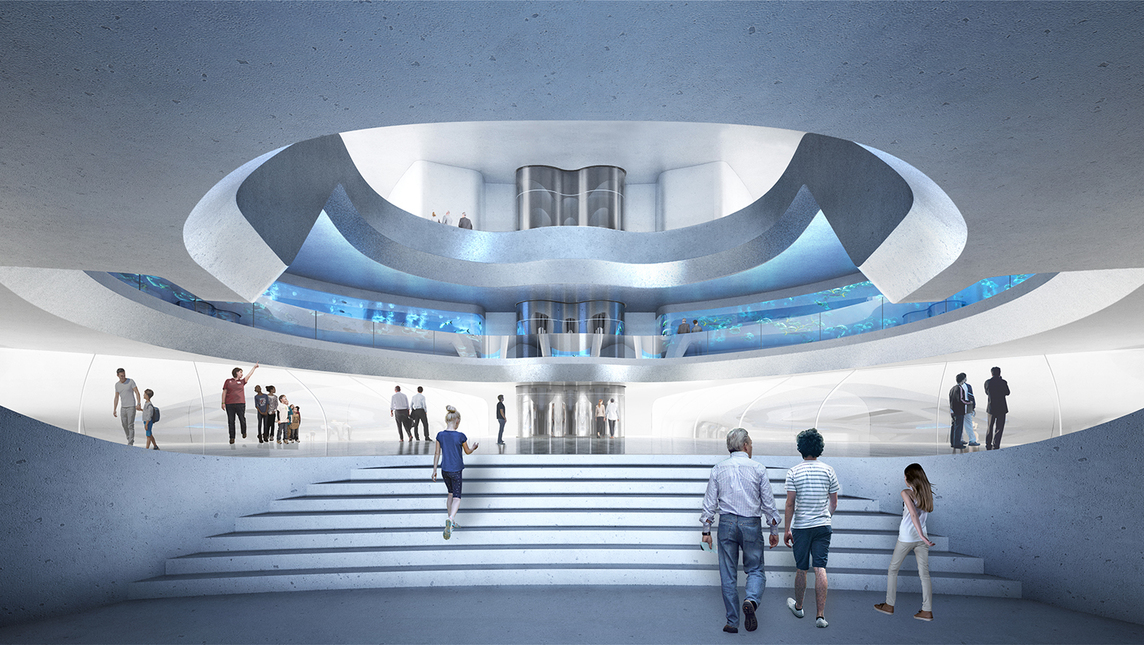
Designs revealed for Living Coral Biobank in Port Douglas
REEF CONSERVATION
Concept designs for the world’s first Living Coral Biobank, a dedicated coral conservation facility proposed to be built in Port Douglas, have been revealed.
Great Barrier Reef Legacy’s $70 million Living Coral Biobank project aims to secure the long-term future and biodiversity of corals worldwide with the primary goal of the facility to store, keep alive and nurture over 800 species of the world’s hard corals which can be used to rehabilitate reefs in nature in the future.
With the look inspired by the ‘mushroom’ coral, the proposed building, dubbed a ‘living ark’, will be the only dedicated facility of its kind in the world and will be the base for the project which will also use public and home aquarium collectors to hold and maintain backup fragments all over the world, creating the largest collaborative preservation network of corals.
RELATED:
- World’s first Coral Biobank In Port Douglas key to reef survival
The facility’s innovative design and engineering - by Australian architects Contreras Earl Architecture, and engineering and sustainability consultants Arup and Werner Sobek - will make it a world leader in next-generation renewable energy design, creating optimal conditions for coral storage while minimising energy consumption and solar gain.
Dr Dean Miller, Living Coral Biobank Project Director and Managing Director of the Port Douglas based GBR Legacy said the project will begin collecting coral next week off the Far North Queensland coast, to be temporarily stored at Cairns Marine.
And if all goes to plan he said the Port Douglas facility is hoped to be built and housing coral by 2025.
“The Living Coral Biobank is the only project that can secure the living biodiversity of the world’s coral species immediately,” Dr Miller said.

“To ensure this priceless living collection is held in perpetuity for generations to come we need the world’s most advanced facility that also promises to use only renewable energy sources and function with optimum efficiency, while also creating an unforgettable visitor experience - and that’s exactly what this design delivers.”
While the corals will be the primary user of the building, the 6,830 sqm multi-function centre will also host exhibition areas, an auditorium and classrooms as well as advanced research and laboratory facilities over four levels.
The Living Coral Biobank would see visitors get up close to live specimens in aquarium displays, learn about coral ecosystems through exhibitions and events, and observe coral husbandry experts going about their daily work in a protected wet lab environment.
The facility will also have a unique 200-person function space.
Douglas Shire Mayor Michael Kerr said he was blown away by the new, modern design released for the Living Coral Biobank.
“This iconic design will be a recognisable structure which people will automatically relate back to Port Douglas,” he said.
“The unique architecture has the right feel for a globally significant and cutting-edge coral reef conservation facility to be based right here in Port Douglas.”
Mayor Kerr said he believes the proposed state-of-the-art centre will enhance Douglas Shire’s reputation as a leader in reef conservation through innovation and science.

“With their drive and enthusiasm, the team at Great Barrier Reef Legacy are not only going to deliver a world-class preservation project, but give Port Douglas another special attraction for visitors to enjoy.
“Our community has a real opportunity to own this project while making a really positive difference to the environment and the future of the Great Barrier Reef,” he said.
The project’s architects and engineers have integrated a holistic sustainable strategy to the design which includes reducing energy consumption by tactically dividing the building into six compatible climate zones over four levels, with adjacencies minimising energy resource use for climatic control. Aspiring to the biosystems of the coral reefs themselves, the building will aim to be self-sufficient and carbon neutral.
Architect Rafael Contreras said this project brings with it a profound responsibility to consider the impact of architecture and the construction industry on the natural world.
“The Living Coral Biobank is an opportunity to set a global benchmark for sustainable outcomes and zero-carbon goals as well as creating a world-leading conservation and education facility.
“The ambition for this project is to create a beacon for environmental awareness – a centre of hope, learning and wonder,” she said.

Submit a letter to the editor here.
* Readers are encouraged to use their full details to ensure letter legitimacy.
Send news tips and videos here
* Comments are the opinions of readers and do not represent the views of Newsport, its staff or affiliates. Reader comments on Newsport are moderated before publication to promote valuable, civil, and healthy community debate. Visit our comment guidelines if your comment has not been approved for publication.